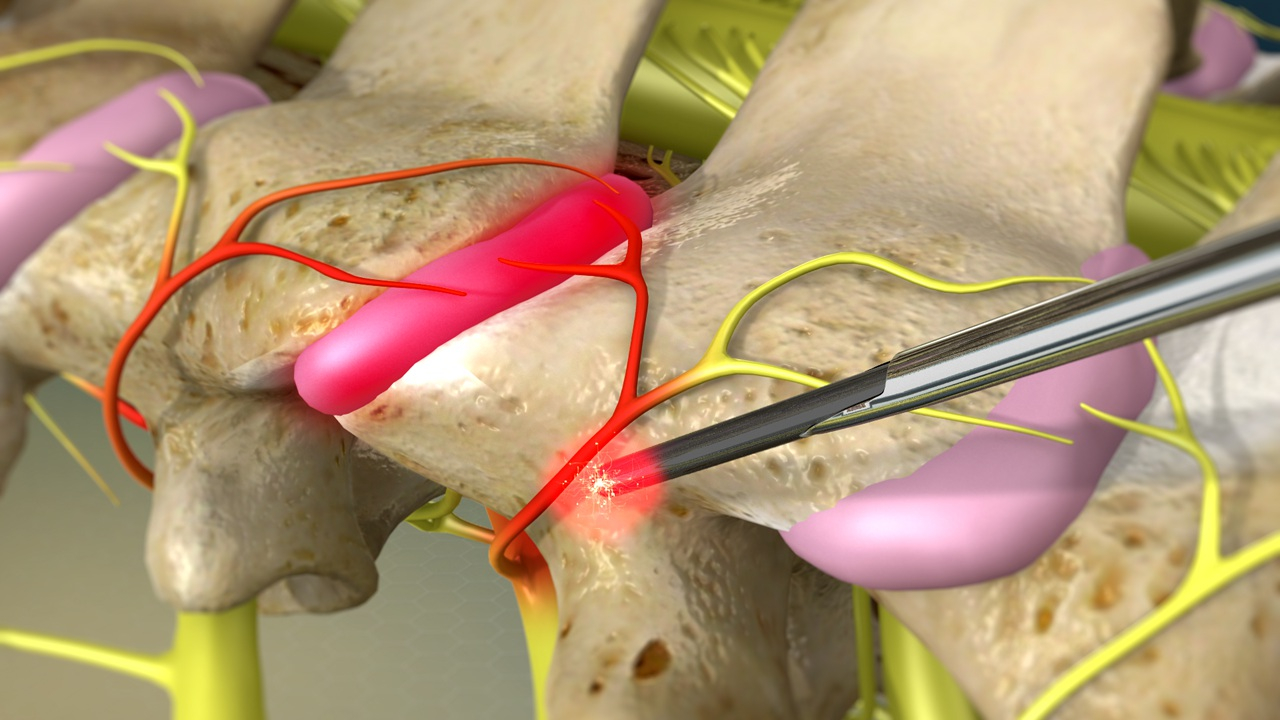
Endoscopic Rhizotomy
An Endoscopic Rhizotomy is the least invasive technique that can treat chronic low back pain originating from spinal arthritis or in other words facet arthritis. This technique allows direct visualization of the medial branch nerves that supplies the arthritic facet joints in the back of the spine. This procedure may also be called a facet joint denervation.
What is a minimally invasive endoscopic rhizotomy surgery?
An endoscopic rhizotomy is the least invasive surgery that allows direct visualization of the medial branch nerves that supply the arthritic facet joints in the back of the spine. This procedure may also be called a facet joint denervation.
Medial branch nerves are very small nerves that innervate the facet joints of the spine. Facet joints are the joints connecting the different vertebra of the spine to each other. The joints are present on both sides of the spine from the neck to the lower back. When facet joint become arthritic, it can irritated and compressed these nerves and causing debilitating chronic low back pain. These nerves are not the nerves that control your bowel, bladder and/or sensation, movement in your legs.
The goal of the surgery is to identify these painful nerves by using endoscope and “snip” them using special equipment to cure these painful nerves. Again, these nerves are not the nerves that control your bowel, bladder and/or sensation, movement in your legs; thus very minimal to none consequences following the surgery.
What is the different between a radiofrequency ablation and an endoscopic rhizotomy?
A radiofrequency ablation is a procedure for back pain where pain specialists use special needles and electrical current to turn off the nerves and their ability to transmit pain signals. The procedure in a way is a “guessing” at best as they do not identify or “seeing” the nerves. Usually provides only 6-9 months of relief. Most of the time the nerve will grow back and the pain returns.
The endoscopic rhizotomy is to identified these nerves and “snip” or making the gap so the nerves are less likely to grow back; thus giving you a long term relief.
What are some of the benefits of an endoscopic rhizotomy surgery?
- Minimally invasive procedure
- Small incision and minimal scar tissue
- Outpatient procedure
- Long term relief of back pain
- Short recovery time
- Very minimal blood loss
- Spinal mobility is maintained
When is an endoscopic rhizotomy recommended?
- The patient has lower back pain longer than 6 weeks with no response to conservative treatments
- Patient has restricted range of movement in the lumbar spine, particularly when bending backwards
- Facet joint arthritis has been identified as the source of pain through diagnostic injections
